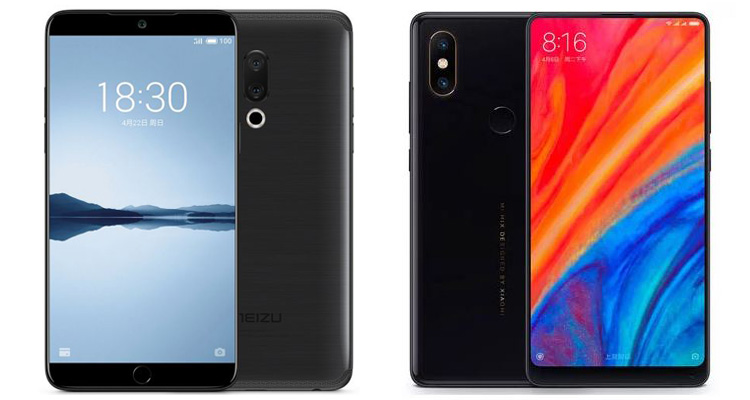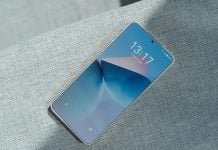If we exclude some Huawei devices, Chinese flagship smartphones are always way cheaper than the other handsets from mainstream brands like Samsung and Apple. Meizu 15 Plus and Xiaomi Mi Mix 2S are the emblems of this category of mobile devices and they can offer impressive specs without making your wallets empty. If you are looking for a refined high-end device these two models are surely among the best choices, but which is the very best one for your particular need? Let’s find it out with a Meizu 15 Plus vs Xiaomi Mi Mix 2S specs comparison highlighting strong and weak points of each handset.

Meizu 15 Plus vs Xiaomi Mi Mix 2S
| Meizu 15 Plus | Xiaomi Mi Mix 2S | |
|---|---|---|
| DIMENSIONS AND WEIGHT | 153.8 x 78.3 x 7.3 mm, 177 g | 150.9 x 74.9 x 8.1 mm, 191 g |
| DISPLAY | 5.95 inches, 1440 x 2560p (Quad HD), 16:9 ratio, Super AMOLED | 5.99 inches, 1080 x 2160p (Full HD+), 18:9 ratio, IPS LCD |
| PROCESSOR | Samsung Exynos 8895, octa-core 2.5 GHz | Qualcomm Snapdragon 845, octa-core 2.8 GHz |
| MEMORY | 6 GB RAM, 64 GB – 6 GB RAM, 128 GB, micro SD slot | 6 GB RAM, 64 GB – 6 GB RAM, 128 GB – 8 GB RAM, 256 GB |
| SOFTWARE | Android 7.1.2 Nougat, Flyme UI 7.0 | Android 8.0 Oreo, MIUI 9.5 |
| CONNECTIVITY | Wi-Fi 802.11 b/g/n/ac, Bluetooth 4.2, GPS | Wi-Fi 802.11 a/b/g/n/ac, Bluetooth 5.0, GPS |
| CAMERA | Dual 12 + 20 MP, f/1.8, OIS 20 MP f/2.0 front camera |
Dual 12 + 12 MP, f/1.8 + f/2,4, OIS 5 MP, f/2.0 |
| BATTERY | 3500 mAh, fast charging (mCharge 4.0) | 3400 mAh, fast charging (Quick Charge 3.0) 9V / 2A |
| ADDITIONAL FEATURES | Hybrid Dual SIM slot, pressure-sensitive Home key | Dual SIM slot |
While both Meizu 15 Plus and Xiaomi Mi Mix 2S offer original and premium aesthetics (and it is not easy to find such beautiful Chinese devices), the first important gap between these handsets can be found in the displays. Meizu 15 Plus has a definitely better panel with a Quad HD resolution providing a higher level of detail and the Super AMOLED technology which has more brilliant colors and deeper blacks.
When it comes to hardware, Xiaomi Mi Mix 2S is the winner. With its Snapdragon 845 chipset, up to 8 GB of RAM and 256 GB of internal storage in the most expensive version, the latest Xiaomi flagship has the best hardware profile you can expect from a mobile device in 2018. This obviously results in outstanding performance in every kind of use. Cameras should be pretty much comparable: both the handsets feature a great dual cam setup. Xiaomi Mi Mix 2S is able to capture incredibly detailed photos in every environment and it is currently in the top 10 best camera phones ranking by DxOMark (Xiaomi Mi Mix 2S review here!).
We will be able to tell you more about the Meizu 15 Plus when we will test its camera thoroughly but that’ll take some time as it has just been announced. Considering that it includes the Sony IMX380 sensor from Huawei P20 (the best camera phone alongside P20 Pro) and an amazing 20 MP selfie camera, it should deliver good performance. There is just 100 mAh of difference between the battery, but Xiaomi Mi Max 2S may last more (it reaches the end of a working day with 20-25% of remaining charge) due to its efficient components.
RELATED: First Meizu 15 Camera Samples Are Here & They Are Pretty Good!
Some special features: Mi Mix 2S features wireless charging, while Meizu 15 Plus has stereo speakers and a pressure-sensitive Home button which can be programmed with gestures. Meizu 15 Plus’ launch price in China is about €323/$395, while Xiaomi Mi Mix 2S starts from about €430/$527.
Go for the Xiaomi Mi Mix 2S if you are looking for the best design (metal frame + ceramic back) and performance, while if you want a device which is more comfortable to use and provides an outstanding multimedia experience (and you also want to save some money), choose Meizu 15 Plus.
Meizu 15 Plus vs Xiaomi Mi Mix 2S: PROS and CONS
Meizu 15 Plus
PRO
- Stunning display
- Refined design
- Great cameras
- Stereo speakers
CONS
- Still running Nougat
Xiaomi Mi Mix 2S
PRO
- Flagship-killer performance
- Awesome photo quality
- Qi wireless charging
- Great design
CONS
- No micro SD






